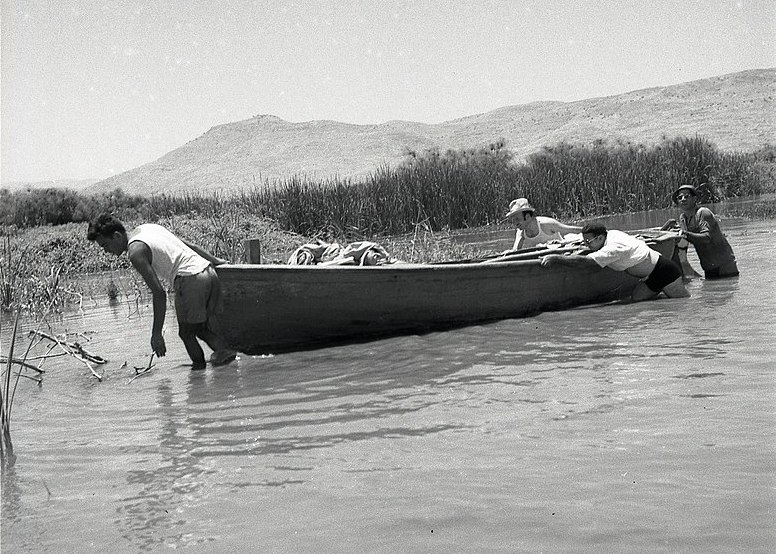The Miracle of the Valley
With just a little knowledge of geography, a glance at the infamous 1947 United Nation’s Partition Plan of the Land of Israel, reveals that as far as good land goes, the Jewish people were given the short straw. Land partitioned for the Jewish community – including the remnant of survivors of the Holocaust – was nothing more than the sandy coast, the barren Negev and swampy valleys. None of these areas promised any potential for building thriving communities. Yet with nowhere else to go, and with a Jewish deep yearning to fulfil a two‑thousand‑year‑old dream to return to our homeland, the rest is history. The Jewish people accepted the partition and months later even had to fight to retain it.
“What has become known in popular culture as “Arab land” much of it is in fact the purchased property of the Jewish community”
What has become known in popular culture as “Arab land” much of it is in fact the purchased property of the Jewish community. These pieces of land included the area of the Hula valley, the purchase confirmed by legal documents dating back nearly a hundred years. It was the Russian Zionist pioneer Yehoshua Heineken who had spent years raising money to buy back land from absentee Arab landlords. For the Jewish community, the “generosity” of the 1947 partition plan was simply stating the obvious, the land was theirs – and all the plan did was deprive Israel of what they had already bought.
The draining of the purchased Hula Valley was to be critical for the survival of the people of Israel. Draining the sodden malaria-infested soil into land suitable for crops would not just supply necessary food, it would also open up opportunities for building housing and industry.
Even though the project began in the 1930’s, World War II, a subsequent lack of funds, and the outbreak of the 1948 War of Independence drew the project to a halt before it had really begun. It was only after that terrible last war, that Israel could finally focus on turning the valley into arable land.
The project was massive. But the 15,000 acres of a malaria infested swamp was considered so vital to the survival of Israel that the whole population was eager to help. The undertaking restarted in 1951 and captured the imagination of the entire fledgling state. Newspapers regularly provided frequent updates, and the endeavour became the talk of the town.
“But if Israelis believed that with the bloody War of Independence behind them, they were safe and sound, they would soon be proven to be wrong”
But if Israelis believed that with the bloody War of Independence behind them, they were safe and sound, they would soon be proven to be wrong. Hardly a plow had struck the earth when the Syrians launched an official complaint to the United Nations, falsely claiming that working the Hula Valley was damaging their own water sources. True to form, the United Nations issued a resolution against Israel and ordered the young state to stop the work immediately. The issue was so contentious and so very emotional for Israel that Abba Evan, the Israeli ambassador to the United Nations even fainted after he had delivered his speech.
But nevertheless, the work went on, which in turn raised questions in Israel itself. Jewish environmentalists warned of the danger to the wildlife. One newspaper published a long editorial asking about the disappearance of a wonderful world of water plants, reeds and wildlife which had existed there before the dawn of humanity. But the peat, a soil rich in nitrates was needed for agricultural success. And the Hula Valley was full of peat. In contrast to concerns expressed about wildlife, there were national newspapers which excitedly reported on the first plows tilling the land – that only a few years later had been undisturbed under the water.
While peat may be good for crops, no one foresaw the upcoming disaster. With much of the water gone, the peat-heavy soil began to spontaneously bursting into flames. Full of nitrates, the smouldering peat threatened to poison the Sea of Galilee, which at that time was the only major source of water in the country. The whole project which the nation had backed, now looked like it was turning into an ecological disaster. But out of necessity came a solution. Israelis dug canals to the level of the groundwater which in turn flooded the smouldering earth.
And so, at last, the Hula was dried, malaria was gone, the smouldering peat extinguished, the crops were growing and the work had come to an end.
But the draining of the swamp had nevertheless had had a devastating effect on wildlife.
Species were dying out and millions of birds barely flew over the Valley anymore to stop and feed as they had done for thousands of years – a migration that even the Bible talks about. The new available farm land had solved one problem but also had created a moral and ecological one. Causing harm to the earth and its creatures is not fulfilling the commandments. A solution had to be found.
It was finally decided to re-flood certain areas of the Valley to bring back the world life and create a haven for these endangered species. 250 acres were assigned for artificial lakes. After creating the lakes, reeds and canes were planted around them. In addition, another 1,000 acres was set aside to become a controlled and malaria-free area of swampy terrain. This would be critical and a rich source for wildlife. Next was tempting the birds with food, Fish were brought from commercial fishponds to attract migrating cranes, cormorants and pelicans. When the re-flooding began, people tuned in from all over the country. Many watched with baited breath not knowing for sure if this ecological gamble would even pay off. But it did, and the nation breathed a sigh of relief. The area was given the name “Agamon,” which in English means “little lake.” Within a very short time the swamp ecosystem was restored. It was a lifesaver for hundreds of species. Birds which had disappeared after the draining of the swamp were starting to return – not just to stop over for a quick feed and a rest, but to even spend the winter months in the Valley. Today over 500 million birds stop in the Valley or fly over it twice a year.
The project of draining the Hula Valley and subsequently creating the Agamon was one of the most challenging and emotional undertakings in the history of the early years of the State of Israel. Without a doubt, many mistakes were made, which lead to terrible ecological damage, the death of species, internal divisions and even a ridiculous international crisis drummed up by Syria whereby Israel was (again) condemned by the United Nations. Those were tough days. But looking back, there is not an Israeli who would say it wasn’t worth it. And without a doubt, 500 million birds would certainly be inclined to agree.





